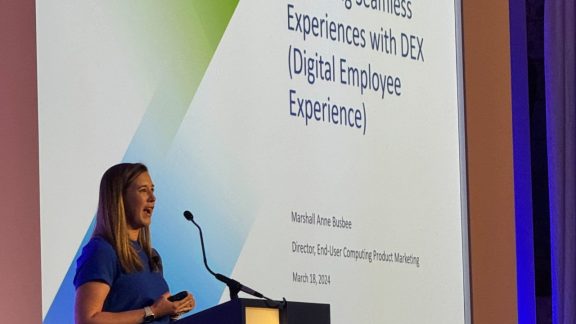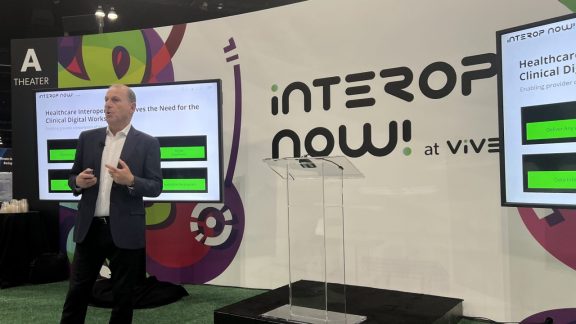By Warren Ponder, Director of Product Management, End-User Computing, VMware and Pat Lee, Director of End-User Clients, End-User Computing, VMware
Today, I am really excited to share another exciting project I was to be asked to support our team in delivering, with the announcement of Horizon 6. One of the many new capabilities that will be available is application remoting of RDS hosted apps and extended capabilities for RDS based desktops.
There’s been some speculation and many experts have had some really good questions about how, what and why we are doing this so I wanted to provide some color to many of the questions I know people have.
Why Application Remoting now?
Several factors came into play in our decision but the primary factor was customer demand. We spent a lot of time with customers across the globe that included all sizes, levels of expertise, and stages of their journey toward a mobile-cloud vision. We didn’t focus on what we already knew about application remoting, but how customers were actually using app remoting today – what they like, don’t like, and the role they see it playing in the future. We wanted to make sure we understood how their needs around app remoting had evolved so we could introduce the appropriate improvements.
With the increase of mobile devices and cloud services, the mobile-cloud era is upon us. It’s changing the landscape. More than ever customers are looking for simplicity and converged infrastructure. They look to VMware as a strategic partner to deliver SDDC and EUC capabilities supporting their Hybrid Cloud efforts. Working closely with customers it was made clear to us that delivering a single platform that converges virtual desktops, RDS hosted apps, SaaS apps, virtualized ThinApps and even third party solutions such as Citrix XenApp is what customers needed to be successful. This all needs to be possible though a unified workspace that gives their users one place to go for access and consumption.
Building upon what we already have
Some have speculated it would take years for us to build anything serious but that was not the case when adding this capability into VMware Horizon 6 because we had most of what was needed to support App Remoting for some time. Let’s take a look at some of the key components for on-prem or hybrid cloud deployments supporting app remoting:
- Session Brokering, Load Balancing and Cloud Pods
- Orchestration
- Resource bursting, VM migration and Elasticity
- Image management and provisioning
- Blast and Blast with PCoIP remoting protocol
- Broad set of clients for different access devices
- Monitoring and Management
Integration with RDSH (Remote Desktop Session Host)
Support for RDS or Terminal Server based desktops has always existed in Horizon View. Expanding upon our existing support, we worked closely with Microsoft to build our own protocol provider for RDS. With our own protocol provider we are able to integrate our graphics and protocol stacks such as Blast with PCoIP. This also allows us to eventually enable other remoting capabilities we provide with the Blast user experience on virtual desktops
This is the only proper, supported, way to integrate with Microsoft RDS. Although it’s not an easy undertaking, it provides several benefits. Windows OS and other capabilities unique to RDSH like fair share CPU scheduling, or IP virtualization are all supported. Applications that need session level information, leveraging WTS API’s all work without ISV’s having to do anything special or unfamiliar. Administrators familiar with managing or designing RDSH based desktop or app remoting solutions will feel right at home.
Providing a seamless remoted app experience
A key component of remoting apps is seamless windows. This is the ability to remote one or more applications to the user. Applications should have the behavior and experience of running locally. Two of our personal desktop products, Fusion and Workstation have provided a similar feature for years called Unity. Unity seamlessly integrates applications running in a local VM with the host operating system. Building upon this, we extended it to remotely display applications across networks.
Today, we bring all of our experience making Windows apps run well on multiple platforms with Horizon 6 and deliver an amazing Windows remote application experience for Windows, Mac, iOS and Android users.
From Windows XP SP3 to Windows 8.1 Update 1, the Windows client delivers a great remote application experience for Windows users. With individual applications that have seamless windows in the task bar, jumplist integration and favorites, and the ability to save desktop shortcuts for apps and desktops, the Windows client makes it’s easy to get to your apps and desktops when you want them.
Mac users get the most seamless way to run remote Windows applications. Use common Mac keyboard shortcuts for cut, copy, and paste. Windows applications show up as individual applications on the dock and you can quit individual Windows applications or open windows using standard Mac keyboard shortcuts. Finally, you can leverage Mission Control to switch to any open Windows application or window and much more.
On iOS and Android, swipe to bring up the intuitive sidebar to switch between open application windows, close a specific open window or application, or easily open a new application.
Integration across Horizon 6
Integration with VMware View is seamless and strait forward. Customers can upgrade existing environments and instantly have the ability to remote RDSH hosted desktops or apps. The only thing needed is the RDSH servers.
View provides ability to create farms, which are groups of RDSH servers hosting apps or desktops. Within View, app pools are created and used to organize application entitlement for users or groups. App Pools can be created automatically using applications discovered across farms. Unique apps that are not registered or started using scripts can also be created manually. Apps can mixed with hosts serving RDSH desktops. Apps can come from multiple farms and a user can also access multiple apps simultaneously.
Users will be able to access their RDS hosted apps or desktops using devices from our broad ecosystem of device partners and the Horizon Client for Windows, Mac, iOS or Android. A client for Linux will also be available soon.
A unified workspace is possible though Horizon Workspace integration. Users can access their SaaS, ThinApps, RDS hosted apps, even apps from Citrix XenApp from one, unified workspace that provides a consistent experience across any device.
Enhanced Management
Need some management? The vCenter Operations team has expanded vCenter operations to include support for RDSH hosts, including integration with PCoIP stats monitoring on a per session basis from RDSH.
In support of our hybrid cloud delivery, all components of Horizon 6 have been built with a focus on flexibility to ensure that customers can choose on-premise or off-premise or both to deliver a common and consistent experience to their end users from a single Horizon client.
As you can see, a lot of work went into adding this capability to Horizon 6 but we truly believe customers will find that our unified approach and support for all types of applications and desktops can save them time, money and spare them a lot of headaches.











